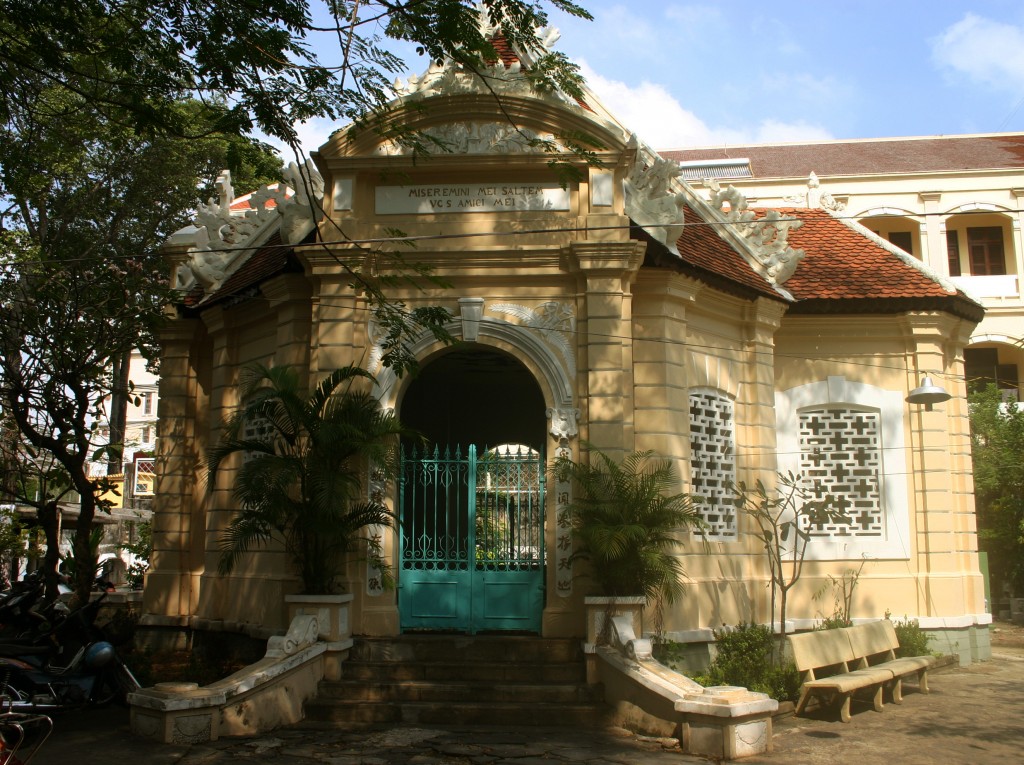
The Pétrus Ký Mausoleum
Jean-Baptiste Pétrus Trương Vĩnh Ký (1837-1898) was a man of remarkable intellect who wrote many scholarly works and made an important contribution to the spread of quốc ngữ (Romanised Vietnamese) literature. Rarely visited by foreign tourists, his mausoleum and memorial house on the corner of Trần Hưng Đạo and Trần Bình Trọng streets in Hồ Chí Minh City’s District 5 is well worth a look.
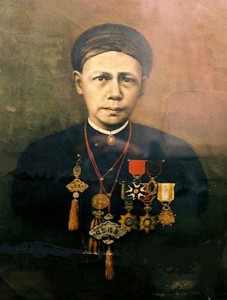
Jean-Baptiste Pétrus Trương Vĩnh Ký (1837-1898)
Born the third son of the chief of Cái Mơn village in rural Vĩnh Long (now Bến Tre) Province, Pétrus Ký was brought up by Catholic priests following the disappearance of his father while on a royal mission to Cambodia. Ký subsequently studied for the priesthood at Pinhalu Seminary in Phnom Penh (Cambodia) and at the Pontifical Seminary in Pulau Pinang (Malaysia), but cut short his studies and returned home in 1858 on the death of his mother.
At this time the Nguyễn court had intensified its suppression of Catholicism, making it impossible for Ký to resume his studies and dangerous for him to remain at home, so he took refuge at the house of French Bishop Dominique Lefèbvre, where he was employed by the Société des Missions Étrangères de Paris (Society of Foreign Missions of Paris, MEP) until 1860. In that year, as the French conquest of the south got under way, he entered colonial service as an interpreter.
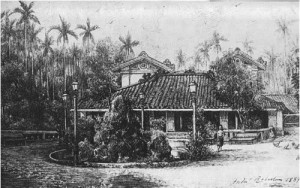
An 1889 drawing of Pétrus Ký’s house in Chợ Quán
In 1861 Ký married Vương Thị Thọ, daughter of an elder of Nhơn Giang village in Chợ Quán. After acquiring land in the parish, he built on it the spacious wooden-framed residence which still stands today.
As the French took control in the south, Ký’s career prospered. In 1863 he was appointed as interpreter for a royal delegation to France (1863-1864) led by royal mandarin Phan Thanh Giản. During the trip he met with several leading French statesmen, as well as cultural figures like lexicographer and philosopher Émile Littré (1801–1881), philosopher and writer Joseph Renan (1823–1892) and poet, novelist and dramatist Victor Hugo (1802-1885). The delegation visited Portugal, Spain and Italy, where they were granted an audience with the Pope in Rome. Before returning home, it is said that Ký even visited Britain and Egypt.
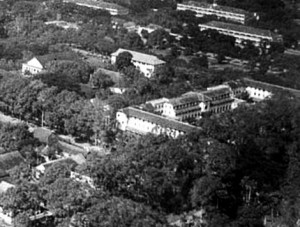
A late colonial aerial photo of the École normale (Normal school) where Pétrus Ký once worked
During the years 1866-1876, Ký taught successively at the Collège des Interprètes (College of Interpreters), the École normale (Normal school) and the Collège des administrateurs stagiaires (Trainee administrators’ college) in Saigon. During this period he specialised in oriental languages, but he also wrote many books aimed at encouraging cultural understanding between the Vietnamese and the European colonial settlers.
In the 1870s Pétrus Ký served on the Sài Gon Municipal Council and also undertook an important assignment in Tonkin. In 1883 he was appointed as an Officier of the French Academy. However, he is said to have repeatedly declined the offer of French naturalisation.
In 1885, following the departure of the young king Hàm Nghi from court to become the figurehead of the anti-colonial Cần Vương uprising, the French installed his brother Đồng Khánh on the throne.
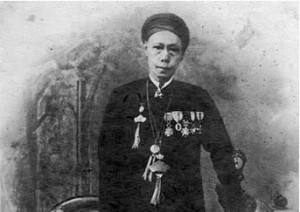
Pétrus Ký pictured in the 1880s
Early in the following year, at the request of his old friend Paul Bert who had recently been appointed as Résident Général of Annam and Tonkin, Pétrus Ký became a colonial government observer within Đồng Khánh’s inner council. However, Ký worked in Huế for just six months – in November 1886 Bert died suddenly of cholera, and soon afterwards Ký was discredited by other members of the mission and fell from favour at court.
He returned to his house in Chợ Quán to teach and write, but his later years were unhappy ones, marred by illness and debt. When Ký died on 1 September 1898, he was buried in the garden of his house. Thereafter, other members of the family were also buried here and part of the compound became the family cemetery.
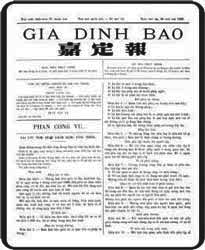
Together with Ernest Potteaux, Pétrus Ký founded the first quốc ngữ newspaper, Gia Định báo
Fluent in at least 10 different languages, Ký left more than 100 works of literature, history and geography, as well as various dictionaries and translated works. His short piece Souvenirs historiques sur Saïgon et ses environs, conférences au collège des Interprètes (Excursions et Reconnaissances, mai-juin 1885, Saïgon) is required reading for historians of colonial Saigon. As early as 1873-1874, Ký was cited by the Grand Larousse du XIXe siècle encyclopaedic dictionary as one of 18 world-famous writers of the 19th century.
Pétrus Ký was passionate about quốc ngữ (Romanised Vietnamese) literature. Together with Ernest Potteaux, he founded the first quốc ngữ newspaper, Gia Định báo (1865-1910) and he is also considered to have helped lay the foundations for the development of Vietnamese-language newspaper journalism. In 1888-1889 he published his own academic journal, Miscellanées.
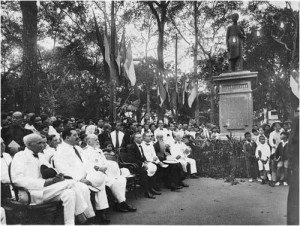
The inauguration of a statue to Pétrus Ký behind the Cathedral on 19 December 1927
On 19 December 1927, in the 30th anniversary year of his death, a statue of Ký by “master sculptor Constant Roux” was erected in the gardens behind the Notre Dame Cathedral – this was removed in 1975 but may still be seen today in the rear courtyard of the Hồ Chí Minh City Fine Arts Museum.
To coincide with the installation of the statue, the Ernest Hébrard-designed Collège de Cochinchine on rue Nancy (now the Lê Hồng Phong Specialist Secondary School on Nguyễn Văn Cừ street) was renamed the Lycée Pétrus Ký. The easternmost section of the boulevard de Ceinture (now Lê Hồng Phong street) in Chợ Quán was subsequently renamed “rue Pétrus-Ky” and a station named “Pétrus Ký” was built on the newly-installed Galliéni electric tramway line at the intersection of rue Pétrus-Ky and Galliéni boulevard (Trần Hưng Đạo street).
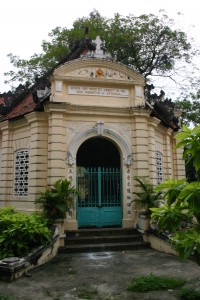
The main entrance to the Pétrus Ký Mausoleum
In 1935-1937, in the run-up to the centenary of Pétrus Ký’s birth, the Société d’enseignement mutuel de la Cochinchine raised funds to build a western classical-style mausoleum in Ký’s honour, enclosing his grave. Accessed through a traditional three-entrance gate, the Pétrus Ký Mausoleum is a simple but distinctive polygonal structure with three gates on the northern, western and southern sides. Above the gates on three sides of the building may be found Latin inscriptions from the Vulgate Bible:
– Miseremini mei saltem vos, amici mei (Have pity on me, at least you, my friends – Job chapter 19, verse 21)
– Fons vitae eruditio possidentis (Understanding is a fount of life to those who have it – Proverbs chapter 16, verse 22)
– Omnis qui vivit et credit in me non morietur in aeternum – Evangelium Sancti Johannis (Everyone that liveth and believeth in Me shall have everlasting life – John chapter 11, verse 25)
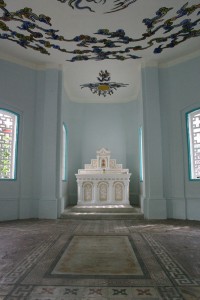
The interior of the Pétrus Ký Mausoleum
The interior of the mausoleum is decorated mainly in light blue, with a striking blue and gold dragon motif painted onto the white ceiling. Beneath the tiled floor lie three tombs – those of Trương Vĩnh Ký in the centre, his wife Maria Trương Vĩnh Ký, née Vương Thị Thọ (died 17 July 1907) on the left and his eldest son Jean-Baptiste Trương Vĩnh Thế (died 26 October 1916) on the right. An alcove in the eastern wall behind the tombs houses an elegant white and gold altar.
Pétrus Ký’s Chọ Quán residence was also restored during the period 1935-1937 and part of it was transformed into a memorial house, complete with a bust of Pétrus Ký and cabinets to house his personal library of books and manuscripts, as well as copies of his correspondence with Renan, Littré and Hugo. A second bust was also ceremoniously installed in the courtyard of the Lycée Pétrus Ký.
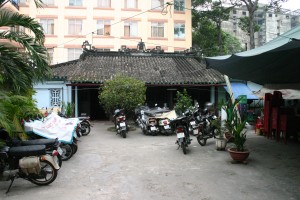
The Pétrus Ký Memorial House, built in 1861
Many of the original documents are now held overseas. However, the bust remains, along with a royal honour awarded to Ký by King Đồng Khánh and an old photograph showing the Governor of Cochinchina and other senior colons joining Ký’s descendants at the mausoleum inauguration ceremony in 1937.
The Trương Vĩnh Ký Mausoleum and Memorial House (Lăng và Nhà lưu niệm Trương Vĩnh Ký) is located at 520 Trần Hưng Đạo street in Hồ Chí Minh City’s District 5. The compound in which the mausoleum is situated houses a café and is open daily from 9am-11am and from 1.30pm-6pm. As yet the mausoleum has not been afforded official recognition as a cultural and historic monument and parts of the compound are in urgent need of restoration.
For other articles relating to Petrus Ky, see
“A Visit to Petrus-Ky,” from En Indo-Chine 1894-1895
What Future for Petrus Ky’s Mausoleum and Memorial House?
Petrus Ky – Historical Memories of Saigon and its Environs, 1885, Part 1
Petrus Ky – Historical Memories of Saigon and its Environs, 1885, Part 2
Petrus Ky – Historical Memories of Saigon and its Environs, 1885, Part 3

An early photo of Pétrus Ký
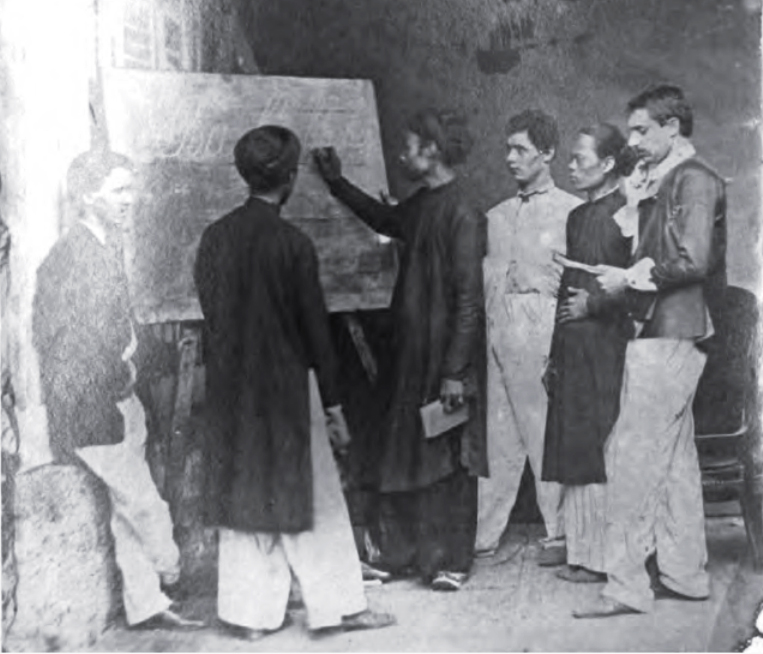
Another early photo of Pétrus Ký and his students
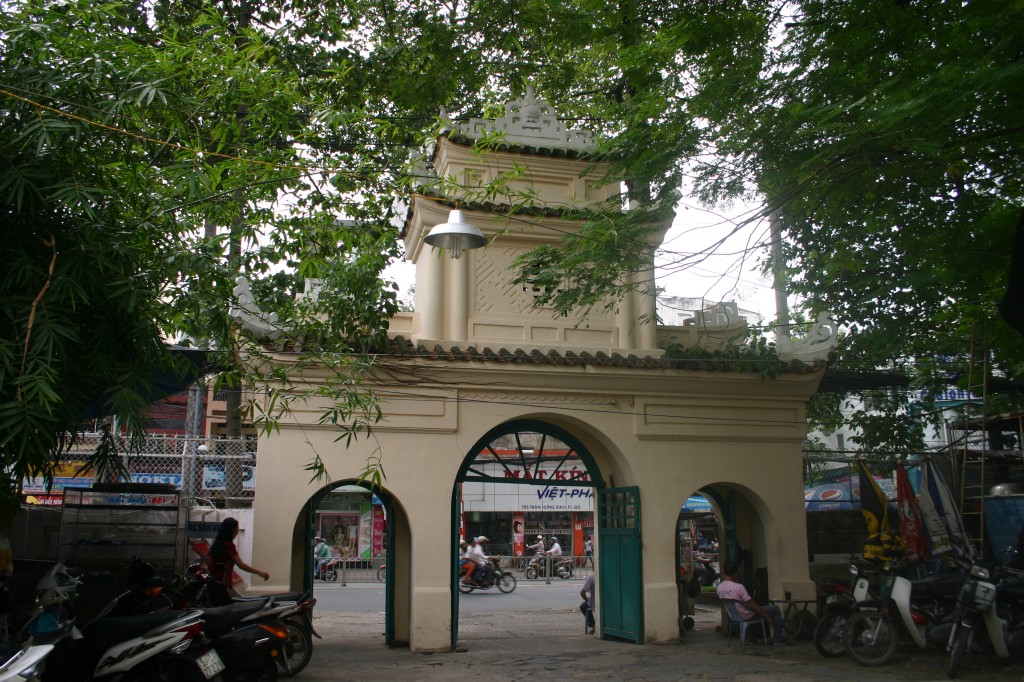
Access to the compound is via a traditional three-entrance gateway
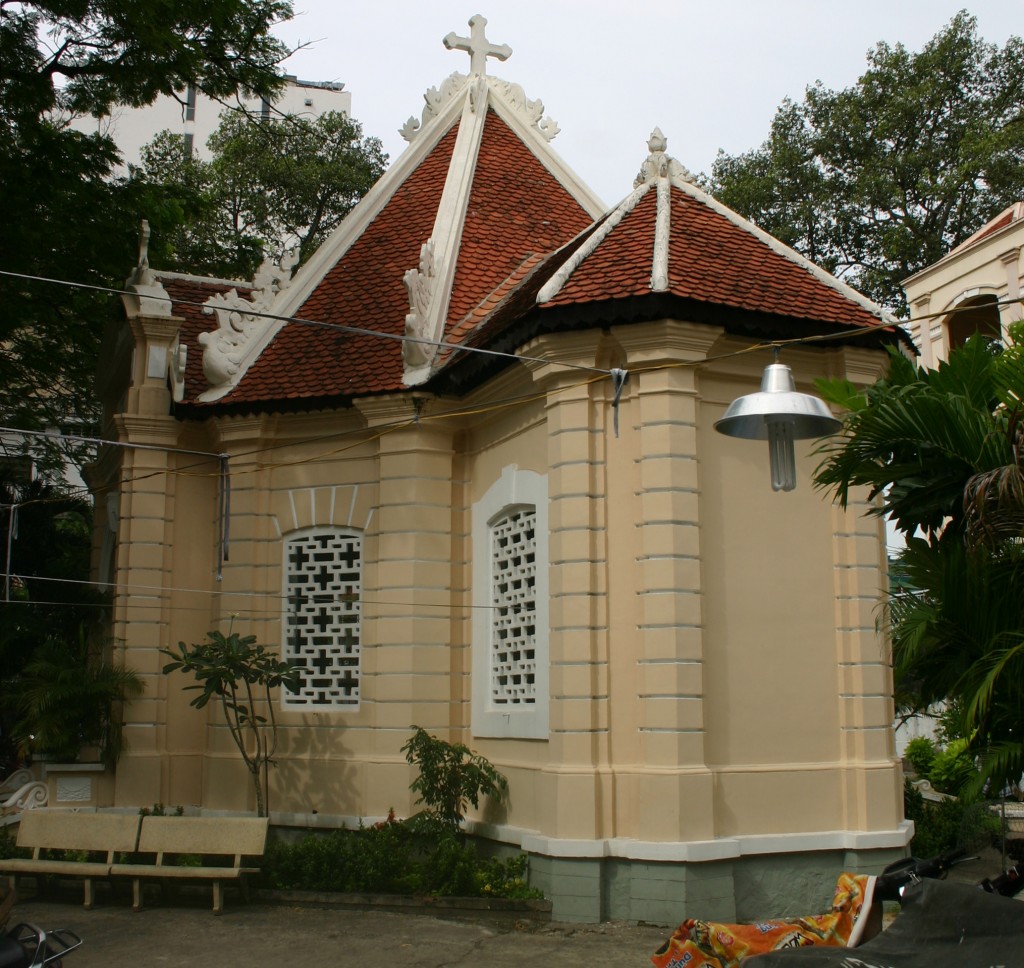
The west side of the Pétrus Ký Mausoleum
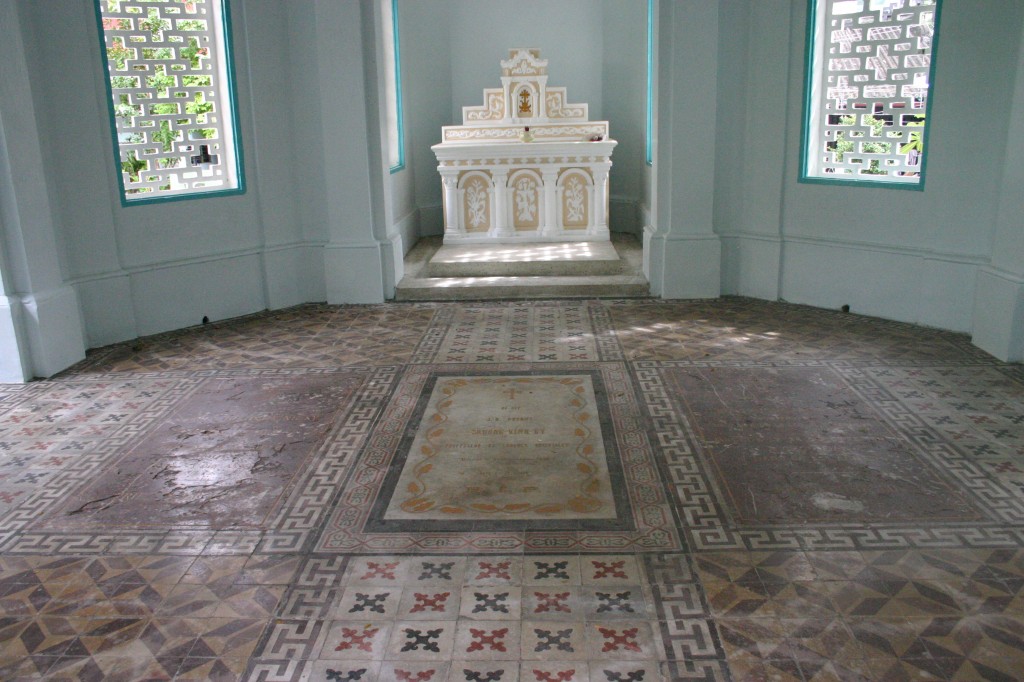
The Pétrus Ký Mausoleum contains the graves of Pétrus Ký (centre), his wife Maria Trương Vĩnh Ký (left) and his eldest son Jean-Baptiste Trương Vĩnh Thế (right)
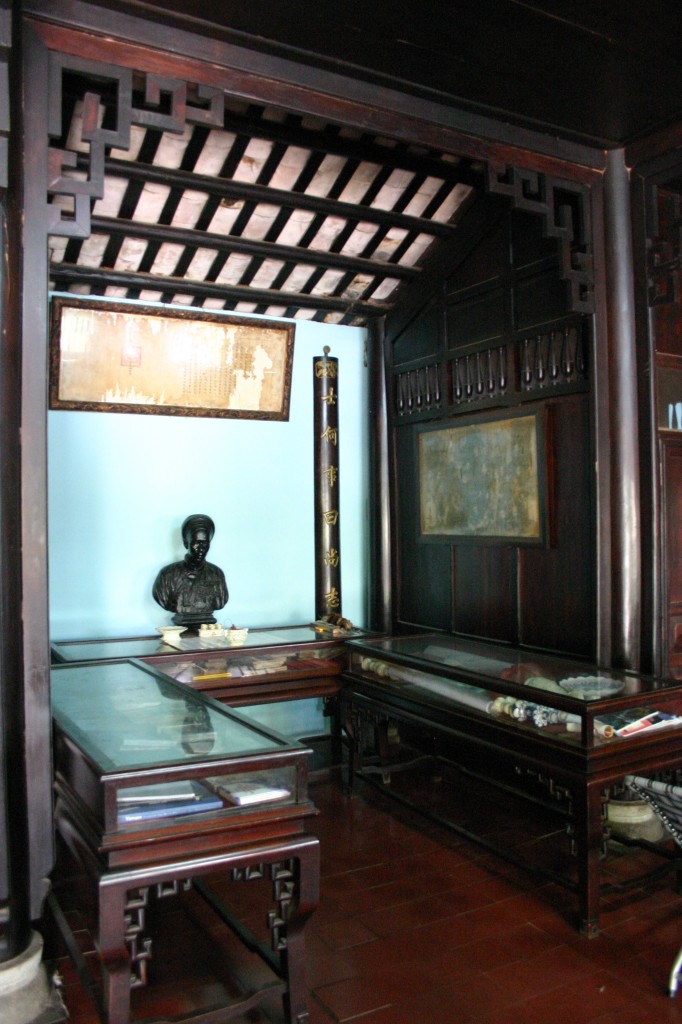
The Pétrus Ký Memorial House contains a bust of Pétrus Ký, plus cabinets which once housed his personal library of books and manuscripts
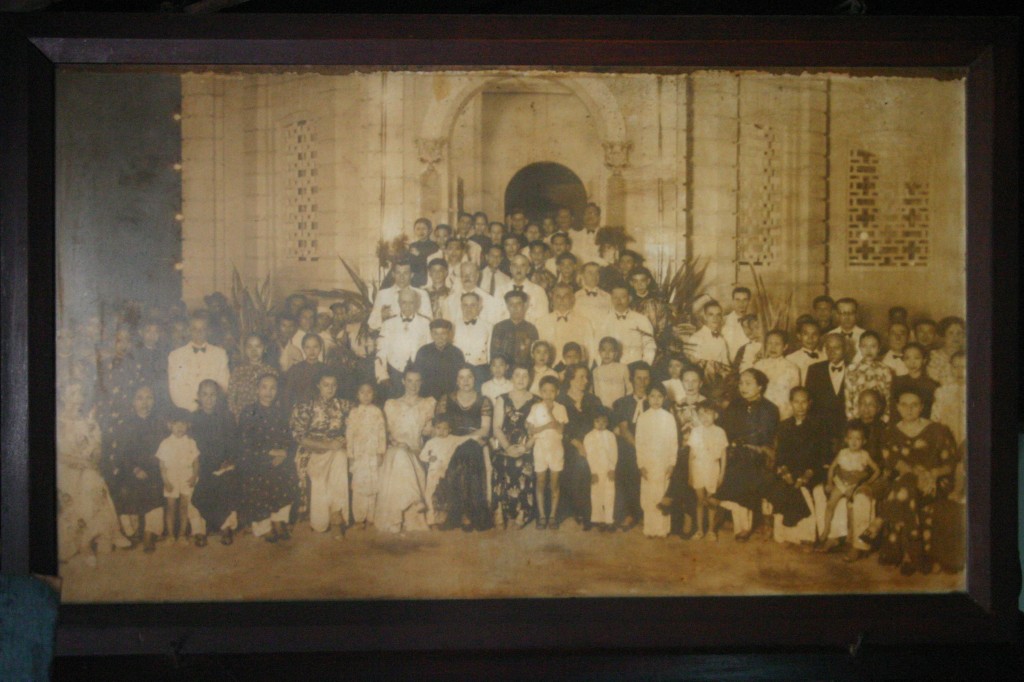
An old photograph of the Mausoleum inauguration ceremony in 1928
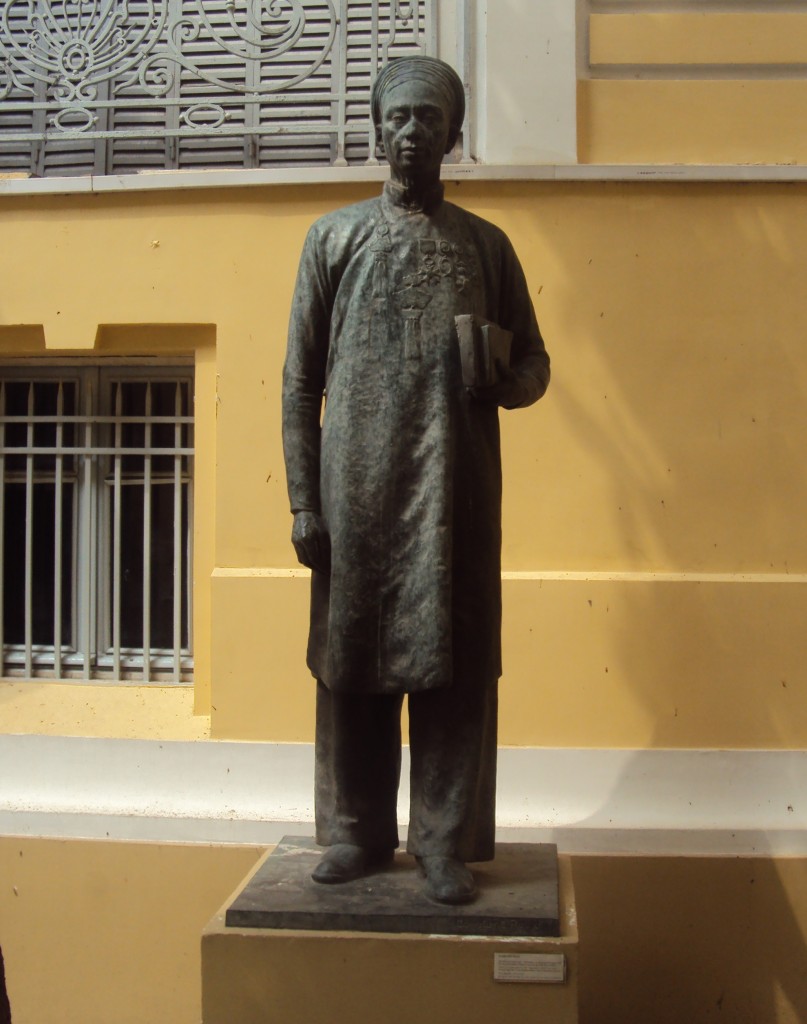
The statue of Pétrus Ký which once stood in the gardens behind the Notre Dame Cathedral may still be seen today in the rear compound of the Hồ Chí Minh City Fine Arts Museum
Tim Doling is the author of the guidebook Exploring Saigon-Chợ Lớn – Vanishing heritage of Hồ Chí Minh City (Nhà Xuất Bản Thế Giới, Hà Nội, 2019)
A full index of all Tim’s blog articles since November 2013 is now available here.
Join the Facebook group pages Saigon-Chợ Lớn Then & Now to see historic photographs juxtaposed with new ones taken in the same locations, and Đài Quan sát Di sản Sài Gòn – Saigon Heritage Observatory for up-to-date information on conservation issues in Saigon and Chợ Lớn.